Melicope saint-johnii, the St. John's pelea or St. John's melicope, is a species of tree in the family Rutaceae. It is endemic to the Hawaiian Islands, where it is present only on the island of Oahu. Like other Hawaiian Melicope, this species is known as alani. It is threatened by habitat loss. It is a federally listed endangered species of the United States.

Cyanea grimesiana is a rare species of flowering plant in the bellflower family known by the common name splitleaf cyanea. It is native to Oahu and Molokai, where it is known from 12 occurrences. It is a federally listed endangered species. Like other Cyanea it is known as haha in Hawaiian.
Cyanea longiflora is a rare species of flowering plant in the bellflower family known by the common name ridge rollandia. It is endemic to Oahu where there are only three remaining occurrences in the northern Waianae Mountains for a total of under 300 individuals. It is a federally listed endangered species. Like other Cyanea it is known as haha in Hawaiian.

Cyanea pinnatifida is a rare species of flowering plant in the bellflower family known by the common name sharktail cyanea. It is endemic to Oahu, but it is now extinct in the wild and only exists in cultivation. Like other Cyanea it is known as haha in Hawaiian.
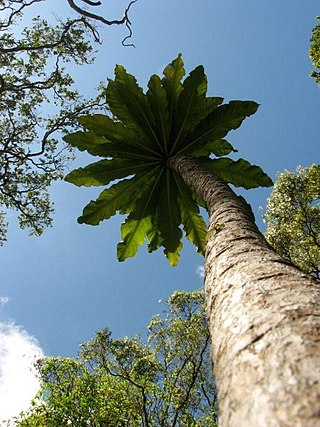
Cyanea superba is a rare species of flowering plant in the bellflower family known by the common names Mt. Kaala cyanea and superb cyanea. It is endemic to the island of Oahu, but it is now extinct in the wild. It exists in cultivation and some individuals have been planted in appropriate habitat. It is a federally listed endangered species of the United States. Like other Cyanea it is known as haha in Hawaiian.

Cyanea truncata is a rare species of flowering plant in the bellflower family known by the common name Punaluu cyanea. It is endemic to the islands of Oahu and Molokai in Hawaii, but it is now critically endangered. It exists in cultivation and some individuals have been planted in appropriate habitat. It is a federally listed endangered species of the United States. Like other Cyanea it is known as haha in Hawaiian.
Cyrtandra polyantha is a rare species of flowering plant in the African violet family known by the common names Niu Valley cyrtandra. It is endemic to the Hawaii, where it is known only from the Koʻolau Mountains of Oahu. In 2007 there were only two populations containing a total of 46 mature plants, but one of the two populations is made up of a single individual. It was federally listed as an endangered species in 1994. Like other Hawaiian Cyrtandra it is called ha`iwale.

Delissea subcordata is a rare species of flowering plant in the bellflower family known by the common names Koʻolau Range delissea and oha. It is endemic to Hawaii, where it is known only from the island of Oahu. It is now only found in the Waianae Mountains, and it is believed to be extirpated from the Koʻolau Range, where it once occurred. As of 2008 there were 40 individuals remaining, 28 of which were mature plants. This plant was federally listed as an endangered species of the United States in 1996.
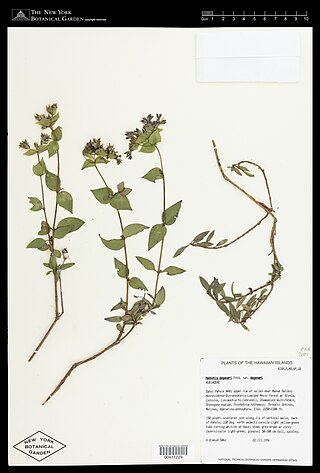
Kadua degeneri is a rare species of flowering plant in the coffee family known by the common names Waianae Range starviolet and Degener's bluet. It is endemic to Hawaii, where it is known only from the island of Oahu. There are four known populations totalling 370 individuals. It is a federally listed endangered species of the United States.

Kadua parvula is a rare species of flowering plant in the coffee family known by the common name rockface star-violet. It is endemic to Hawaii, where it is known only from the Waianae Mountains on the island of Oahu. It is a federally listed endangered species of the United States.
Lepidium arbuscula is a rare species of flowering plant in the mustard family known by the common names `anaunau and Waianae Range pepperwort. It is endemic to Hawaii, where it is known only from the Waianae Mountains on the island of Oahu. In 2003 there were ten populations remaining with fewer than 1000 individuals in total. It is a federally listed endangered species of the US.

Lobelia oahuensis is a rare species of flowering plant in the bellflower family known by the common name Oahu lobelia. It is endemic to Hawaii, where it is known only from the island of Oahu. There are about 100 individuals remaining in the Koʻolau Range, and only one known individual in the Waianae Range. It is federally listed as an endangered species of the United States.
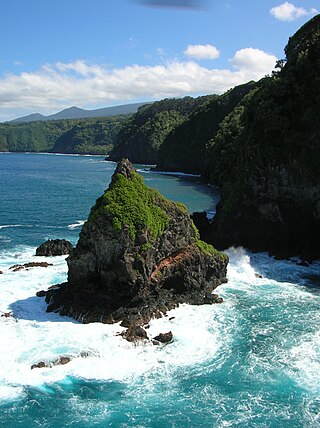
Peucedanum sandwicense is a rare species of flowering plant in the carrot family known by the common name makou. It is endemic to Hawaii, where it is known from Maui, Molokai, Kauai, and Oahu. It is threatened by introduced species of plants and animals. It is a federally listed threatened species of the United States.
Phyllostegia hirsuta is a species of flowering plant in the mint family known by the common names Molokai phyllostegia and hairy phyllostegia. It is endemic to Hawaii, where it is known only from the island of Oahu. It is a federally listed endangered species of the United States.
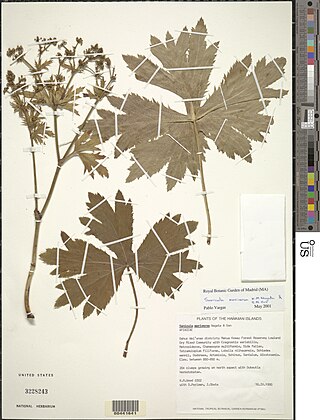
Sanicula mariversa is a rare species of flowering plant in the family Apiaceae known by the common name Waianae Range black-snakeroot. It is endemic to Hawaii, where it is known only from the Waianae Mountains on the island of Oahu. It is threatened by the degradation of its habitat. It is a federally listed endangered species of the United States.

Silene lanceolata is a rare species of flowering plant in the family Caryophyllaceae known by the common names Kauai catchfly and lanceolate catchfly. It is endemic to Hawaii, where it is known only from Oahu, Molokai, and Hawaii, having been extirpated from Kauai and Lanai. It is threatened by the degradation of its habitat and it is a federally listed endangered species of the United States.
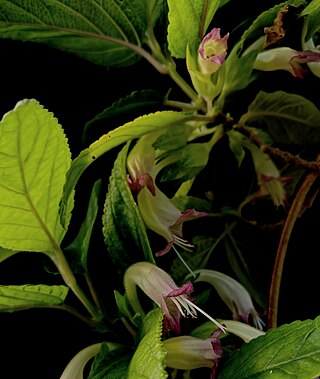
Stenogyne kanehoana is a rare species of flowering plant in the mint family known by the common name Oahu stenogyne. It is endemic to Hawaii, where it is known only from the Waianae Range on the island of Oahu. It is a federally listed endangered species of the United States.
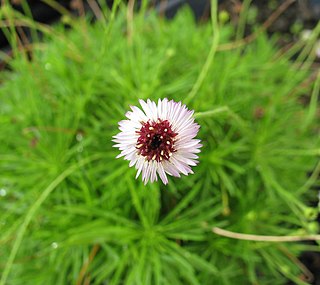
Tetramolopium filiforme is a rare species of flowering plant in the family Asteraceae known by the common name ridgetop tetramolopium. It is endemic to Hawaii, where it is known only from the Waianae Mountains on the island of Oahu. It is threatened by habitat degradation caused by feral goats and introduced species of plants. It is a federally listed endangered species of the United States.

Tetramolopium lepidotum is a rare species of flowering plant in the family Asteraceae known by the common name Waianae Range tetramolopium. It is endemic to Hawaii, where today it is known only from the Waianae Mountains on the island of Oahu. It is threatened by habitat degradation caused by feral goats and pigs and introduced species of plants.

Viola chamissoniana is a species of flowering plant in the violet family known by the common name 'olopu. It is endemic to Hawaii, where it is known from the islands of Kauai, Oahu, Molokai, and Maui.

















